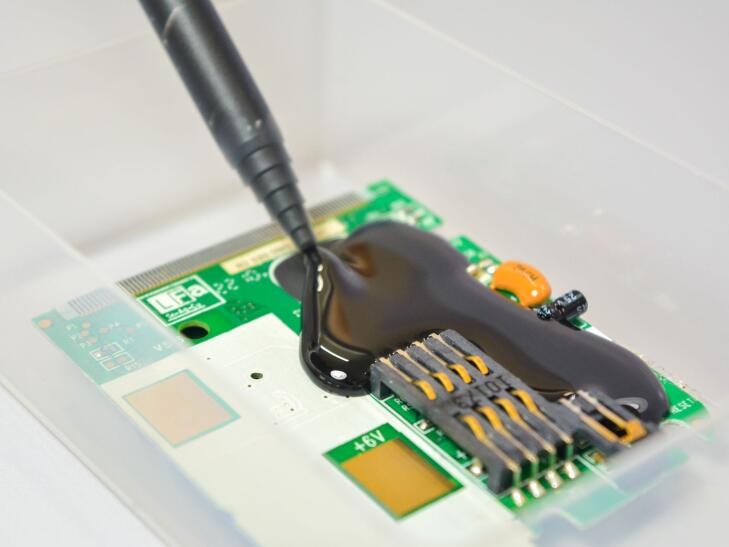PCB potting is a method of protecting a circuit board (referred to as a substrate in these cases) by filling the PCB potting with a liquid material called potting compound or potting resin. The casing of a sealing compound filling device, in most cases, covers the entire circuit board and its components, although in some cases, it can be used to seal individual components.

PCB potting provides excellent wear resistance and protection against thermal, chemical, impact, and other environmental hazards. Typical potting materials include epoxy resin, polyurethane, and organosilicon compounds.
Types of PCB Potting
1. Epoxy resin: a common and durable PCB potting material with strong chemical resistance, high adhesion, and many other ideal characteristics; Excellent adhesion to most materials; High hardness and excellent insulation performance. Its main drawback is that it takes a long curing time and requires curing; Poor repair after potting; It is not possible to have good high and low-temperature resistance at the same time. Generally, high-temperature resistance is good, but low-temperature resistance is poor.
2. Polyurethane: A softer and more flexible potting material that is very suitable for protecting sensitive connectors and other electronic components, which may not be able to withstand harder materials. However, the moisture resistance and heat resistance of polyurethane do not match with some other potting materials.
3. Silicone: One of the most durable and flexible potting compounds, particularly useful for applications that need to withstand extreme temperatures. However, its relatively high cost makes it impractical in certain applications.
Potting is the process of injecting polyurethane potting adhesive, organic silicon potting adhesive, and epoxy resin potting adhesive into devices containing electronic components and circuits using equipment or manual methods and curing them at room temperature or heating conditions to form high-performance thermosetting polymer insulation materials, thereby achieving the purpose of bonding, sealing, potting, and coating protection.
The main function of PCB potting
1) Strengthen the integrity of electronic devices and improve their resistance to external shocks and vibrations
2) Improving the insulation between internal components and circuits is beneficial for device miniaturization and lightweight
3) Avoiding direct exposure of components and circuits, improving the waterproof, dustproof, and moisture-proof performance of devices
4) Heat transfer and conduction
Potting adhesive provides long-term and effective protection for sensitive circuits and electronic components, playing an important role in today's precision and high-demand electronic applications. Before curing, potting adhesive belongs to a liquid state and has fluidity. The viscosity of the adhesive varies depending on the material, performance, and production process of the product. After complete solidification, it can play a waterproof, moisture-proof, dust-proof, insulation, confidentiality, anti-corrosion, temperature resistance, salt spray resistance, shock resistance, and other functions. At present, the most common sealing adhesive products on the market are three types of materials, namely epoxy resin sealing adhesive, organic silicon sealing adhesive, and polyurethane sealing adhesive. The selection of sealing adhesives will directly affect the operational precision and timeliness of electronic products.
Whether our current products are used outdoors or indoors, we need to consider the stability of the product's application and find ways to protect our product components. Only by protecting the core components of the product can the performance and stability of the product be guaranteed to a certain extent. Currently, the most effective and commonly used method is to use potting materials to achieve this goal.